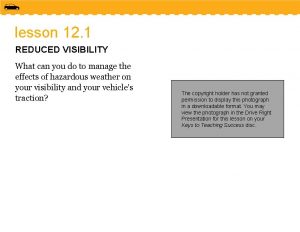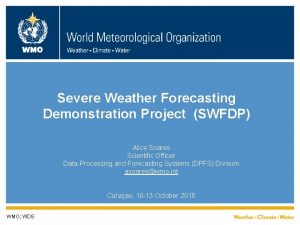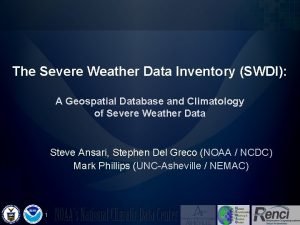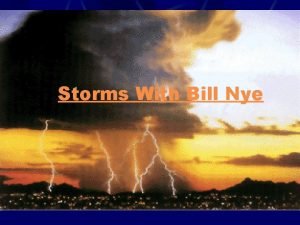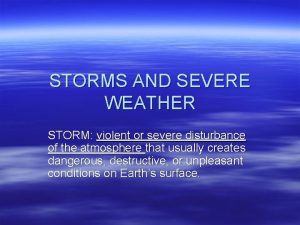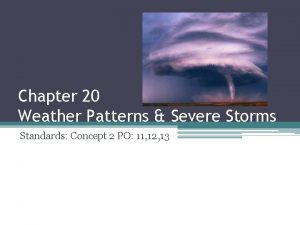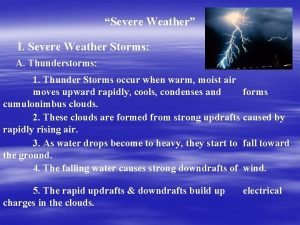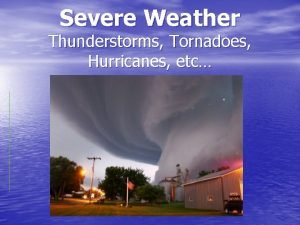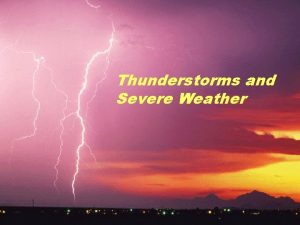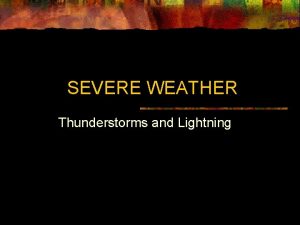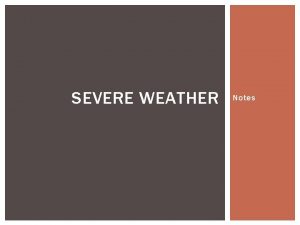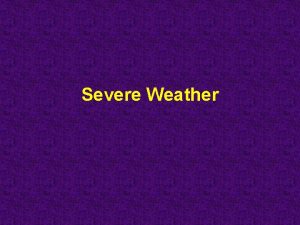Severe Weather Thunderstorms During a thunderstorm heavy rain









- Slides: 9

Severe Weather

Thunderstorms • During a thunderstorm, heavy rain falls, lightning and thunder occur and hail might form • Thunderstorms happen in warm air masses and along fronts. The warm air is forced upward and forms cumulonimbus clouds. These clouds can form heavy rains, strong winds and hail.

How does lightning form? • Inside a storm cloud, warm air is lifted and cool air sinks. This movement of air causes different parts of the clouds to be oppositely charged. • When current flows between these parts of the cloud, lightning occurs.

Why do we hear thunder? • When lightning strikes, the air around the bolt of lightning heats up very quickly. • The air around the lightning expands very rapidly. Then it quickly cools down and contracts. • This movement of air creates sound waves that we hear as thunder.

Thunderstorm Damage Thunderstorms can cause damage in the following ways: • • Flash floods Strong winds Hail Lightning strikes

Hurricanes • A hurricane is the most powerful type of storm. • They form over warm oceans. • Hurricanes have winds that move from 74 – 200 mph. They are measured on the Saffir. Simpson scale, from level 1 – level 5.

How do hurricanes form? • Ocean waters must be warm enough at the surface to put enough heat and moisture into the atmosphere. • Moisture from sea water must evaporate into the atmosphere and a wind pattern must be near the ocean surface to spiral air inward. • As long as a hurricane is over water, the warm, moist air keeps rising and can provide energy for the storm. • When it reaches land, its energy supply is gone and it loses power.


Hurricane Damage • High winds, tornadoes, heavy rains and high waves can cause a lot of damage. • Flooding often becomes a major problem and can do extensive property damage and endanger lives. • Hurricane weather can destroy crops and demolish buildings.
 Overdriving your headlights means
Overdriving your headlights means Heavy weather by weather report
Heavy weather by weather report An almond or lens-shaped cloud which appears stationary
An almond or lens-shaped cloud which appears stationary Ratey algebra 2
Ratey algebra 2 Wmo severe weather
Wmo severe weather Severe weather data inventory
Severe weather data inventory Bill nye tornadoes
Bill nye tornadoes Chapter 20 weather patterns and severe storms
Chapter 20 weather patterns and severe storms Hurricane causes
Hurricane causes Chapter 20 weather patterns and severe storms
Chapter 20 weather patterns and severe storms
